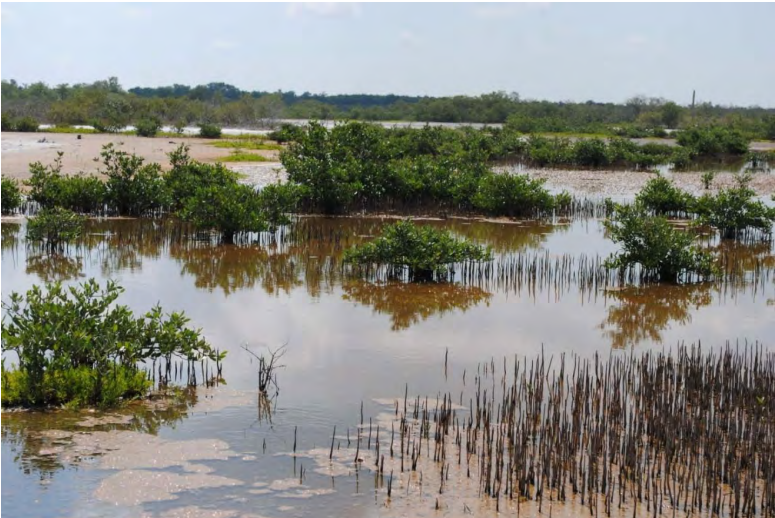Opportunities for Resilience of Southwest Florida's Salt Marsh Ecosystem

The salt marsh community of the Southwest Florida Ecosystem is one of the most unique salt marsh systems in the United States. The subtropical climate of Florida supports a combination of temperate salt marsh vegetation and tropical mangroves that intermix to form an important transitional ecotone.
To identify the extent and nature of salt marshes and the hazards and impacts associated with changing environmental conditions, the Charlotte Harbor National Estuary Program (CHNEP) conducted a vulnerability assessment project. This project helped to illustrate how salt marshes are subject to vast differences in temperature, salinity, winds, evaporation, and storms.
In addition, salt marshes provide many valuable ecosystem services:
- Nurseries and escape from predation habitat for many species of aquatic life including the early life stages of game fish and commercial fish.
- A base of the estuarine detrital food pathway.
- Increases in market-based property appraisal values.
- Stabilization of sediment and shorelines.
- Storm protection.
- Water quality treatment.
- Ecotourism activities such as bird watching and kayaking.
- Migratory bird habitat.
- Commercial fishing and harvesting.
- Recreational fishing.
- Hunting.
- Aesthetic values.
- Carbon sequestration.
A variety of resident and transient organisms depend on the habitat provided by Southwest Florida salt marsh ecosystem including:
- 301 plant species.
- 422 invertebrate species.
- 217 fish species.
- 11 amphibians.
- 31 reptiles.
- 15 mammals.
- 6 federally listed animal species.
- 27 state listed animal species.
Mangroves primarily dominate the CHNEP shoreline (Drew and Schomer 1984). Monotypic stands of black needlerush (Juncus roemerianus) are more common in slightly elevated areas with lower ranges of tidal inundation and dominate salt marsh communities around the mid-estuarine transition zones at the mouths of rivers (e.g., Myakka and Peace Rivers) and creeks (e.g., Hancock). Parts of the interior habitat of Sanibel Island have bands of salt marsh dominated by Baker’s cordgrass (Spartina bakeri) and leather fern (Acrostichum aureum and A. danaeifolium).
Although almost 74% of salt marsh habitat is protected in the CHNEP, habitat continues to be lost to human-induced impacts including development, alterations of hydrology, and pollution. Salt marshes in Charlotte Harbor Estuary have been directly destroyed or impacted from construction activities for residential and commercial purposes including:
- Construction for seawalls.
- Drainage ditches for agriculture and mosquito control.
- Boat facilities.
- Navigation channels.
Man-made hydrological alterations have reduced the amount of freshwater flow from some rivers (e.g., Peace, Myakka), while artificially increasing the flow through others (e.g., Caloosahatchee).
The primary focus of the CHNEP report is to:
- Inventory and determine the areal extent of salt marsh types throughout the CHNEP study area.
- Determine the vulnerability of those marshes to climate change.
- Identify the need and opportunities for avoidance, minimization, mitigation, and adaptation (AMMA) to climate change.
- Recommend strategies to implement alternate AMMA.
This report is designed for local for use by governments, stakeholder groups and the public at large. Through this report, users can develop coastal and land use plans that avoid, minimize, mitigate, and prepares for hazards and impacts to salt marshes throughout the CHNEP study area.
